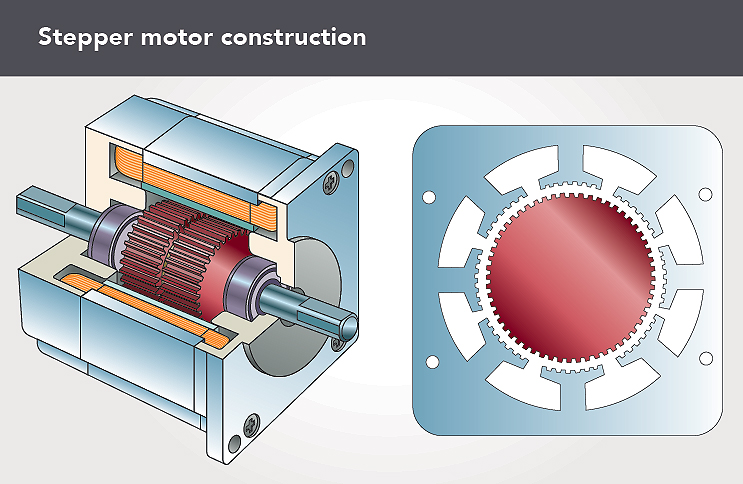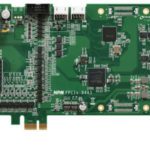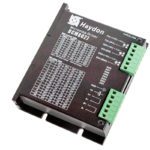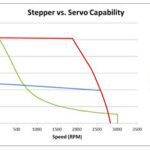Updated July 2018 || Stepper motors are a good choice for many motion control applications, if they’re selected properly. Here’s a quick review of some key tips for making the right choice.
First, define the motion profile. This includes such parameters as required positioning time and acceleration/deceleration time. Related factors include the required positioning increments as well as the application’s necessary accuracy and resolution.

Second, calculate the speed, load inertia, acceleration torque, and load torque requirements with a safety factor. The acceleration torque calculation sometimes tends to be omitted. However, it is a critical factor to consider.
Third, select a motor based on the torque and speed requirements by referring to the motor’s torque-speed curve. Unlike other motors, stepper motors are not rated in wattage. Motor windings can have different current ratings even with the same dimensional size, and the output torque and power varies depending on the winding and speed.
After making the above calculations and selecting a motor, confirm the rotor inertia and load inertia ratio based on the manufacturer’s recommendation. The optimal ratio depends on motor size, and motor type (such as open-loop or closed-loop).
In addition to these key criteria, other considerations are important as well. For instance, you’ll need to know the available voltage and current for the motor. A related factor involves temperature. A common problem with stepper motors is that they can overheat. However, overheating is due mainly to exceeding the rated voltage and current of the motor, but ambient temperature conditions can contribute as well.
Other considerations may include knowing any size and/or weight restrictions as well as whether or not the application calls for microstepping capabilities. This can also influence the choice of stepper motor drive.
As in most cases, after you have analyzed your application needs and are close to selecting a motor, consult with the manufacturer to confirm your choice and to resolve any further questions you may have.







Leave a Reply
You must be logged in to post a comment.